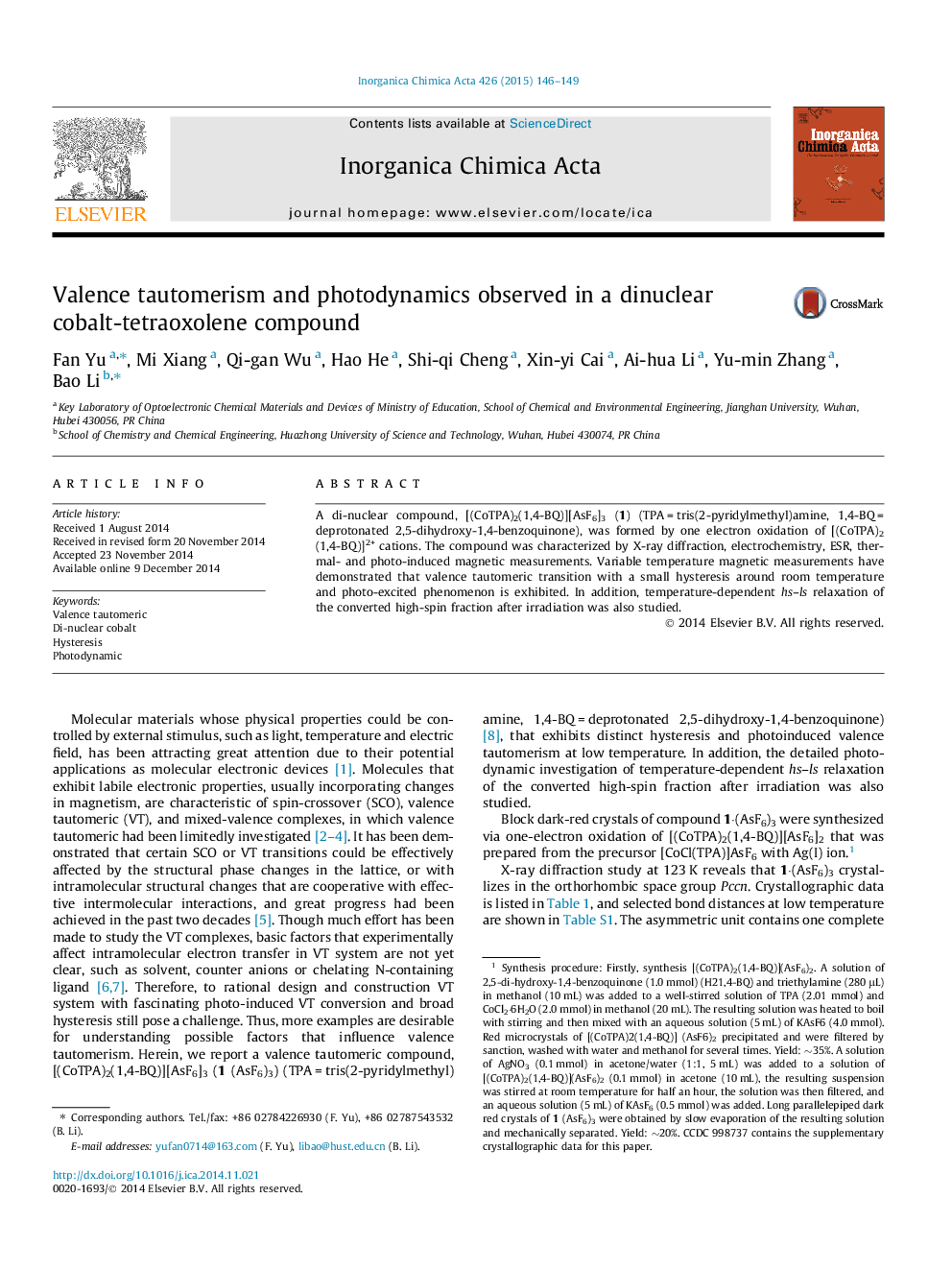| Article ID | Journal | Published Year | Pages | File Type |
|---|---|---|---|---|
| 1306740 | Inorganica Chimica Acta | 2015 | 4 Pages |
•A new di-nuclear valence tautomeric complex was formed.•Valence tautomeric transition with a small hysteresis around room temperature and photo-excited phenomenon is exhibited.•Temperature-dependent hs–ls relaxation of the converted high-spin fraction after irradiation was also studied.
A di-nuclear compound, [(CoTPA)2(1,4-BQ)][AsF6]3 (1) (TPA = tris(2-pyridylmethyl)amine, 1,4-BQ = deprotonated 2,5-dihydroxy-1,4-benzoquinone), was formed by one electron oxidation of [(CoTPA)2(1,4-BQ)]2+ cations. The compound was characterized by X-ray diffraction, electrochemistry, ESR, thermal- and photo-induced magnetic measurements. Variable temperature magnetic measurements have demonstrated that valence tautomeric transition with a small hysteresis around room temperature and photo-excited phenomenon is exhibited. In addition, temperature-dependent hs–ls relaxation of the converted high-spin fraction after irradiation was also studied.
Graphical abstractA new di-nuclear valence tautomeric complex was formed and characterized by X-ray diffraction, electrochemistry, ESR, thermally and photo-induced magnetic measurements. Variable temperature magnetic measurements have demonstrated that valence tautomeric transition with a small hysteresis around room temperature and photo-excited phenomenon is exhibited. In addition, temperature-dependent hs–ls relaxation of the converted high-spin fraction after irradiation was also studied.Figure optionsDownload full-size imageDownload as PowerPoint slide
